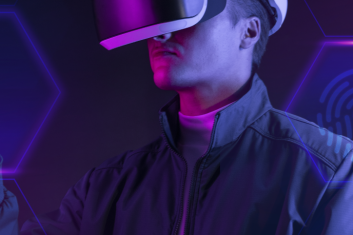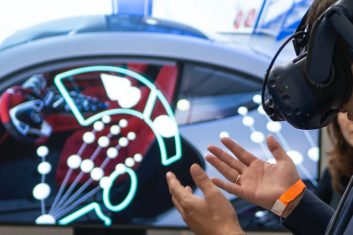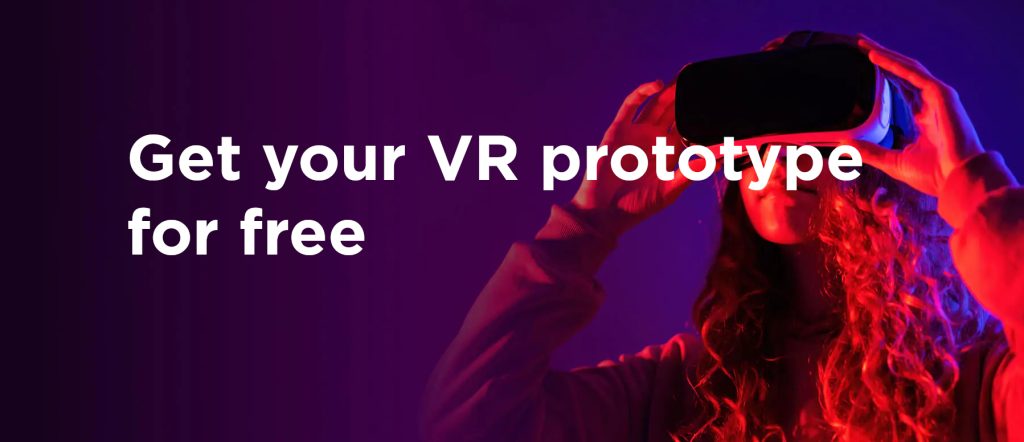What is AR/VR for Corporate Events?
Let’s imagine a situation. A company is planning an online educational event for its employees and faces several questions:
- How can we get employees interested in the event?
- How can we ensure that employees retain as much information as possible?
- How can we improve employees’ concentration and immersion in the process?
- How can we create a networking atmosphere with employees joining remotely?
The answer to all these questions is the same: implement AR/VR technologies.
In this article, we will discuss how to use AR/VR for event management and look at several AR/VR use cases.
What is AR/VR for Corporate Events?
The main goal of using AR/VR technologies in this context is to improve the traditional way of holding corporate events, especially when adapting to remote working environments.
During COVID-19, 70% of U.S. employees worked remotely, and now 81% of those workers believe their employers will continue to support remote work. That means that, besides adapting business operations to a hybrid working model, companies are also trying to improve all forms of interaction, including meetings, presentations, and other corporate events in an online environment.
This is where AR/VR technologies come in.
Want to create an AR/VR solution for your next corporate event? We’re ready to help!HQSoftware has a team of skilled professionals ready to tackle the project. Let’s talk!
Anna Halias
Business Development Manager,
HQSoftware
Using immersive and visual effects can make any activity not only more engaging but also more useful for employees. Besides creating an involving experience, AR/VR provides numerous options for diversifying events and reaching employees all over the world.
It’s important to note that AR/VR solutions are well-suited not only to online but also offline events.
There are many types of corporate events, for various business purposes, but in this article we will focus on internal corporate events. This includes team-building activities, meetings, presentations, and educational events.
So, let’s explore some ideas as to how to use Augmented and Virtual Reality for events. As AR and VR technologies differ both in possibilities and implementation, we will examine their features separately.
Augmented Reality at Events
Using AR for corporate events helps companies add new layers to any online or offline activity. It combines virtual items with the real world and allows attendees to interact with both.
AR works well for presentations. It helps demonstrate slides and infographics in a more engaging way to enhance participants’ perception of information and capture the audience’s attention.
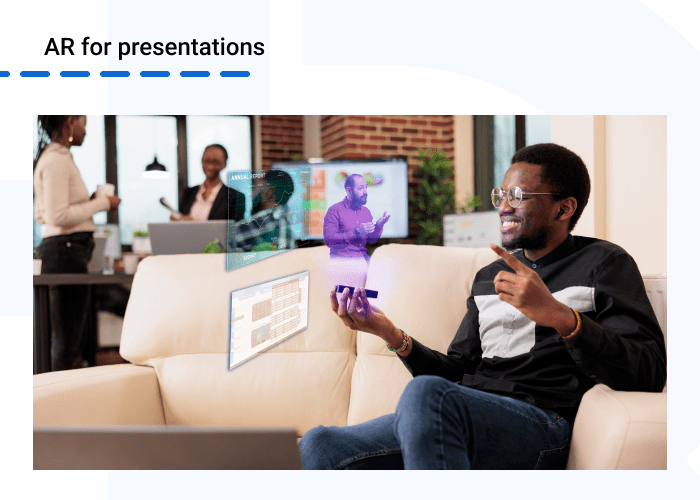
AR also improves product showcasing. Using 3D models or 3D model videos, a speaker can demonstrate a product from all angles or present it in a full manufactured size.
Companies can also use AR for conferences, especially for video conferences and meetings. This is where various backgrounds, visual effects, and interactive elements come into play, increasing the engagement of employees and immersing them in the event flow.
To create a positive experience and reveal the full potential of corporate AR events, companies can use several types of AR systems:
- AR-based events apps. Attendees only need a smartphone with a special app where AR elements will be displayed on the screen.
- Wearable AR, such as AR glasses. Unlike VR headsets, wearable AR devices interact with the real surroundings but extend it with virtual elements.
- Mirror AR uses a screen in which participants can see themselves with overlaid virtual elements. The system is well suited for offline events, as it enables simultaneous interaction with a large number of attendees.
Most often, companies choose AR apps. These eliminate the need to provide participants or event space with particular equipment, as almost everyone has a mobile phone at hand.
Now that we’ve looked at Augmented Reality events, let’s think about how to use Virtual Reality for corporate events.
Virtual Reality at Events
As VR enables users to be transported to a completely new virtual environment, it eliminates real-world limitations and allows companies to create numerous scenarios in virtual event planning.
How do modern businesses use AR to increase their revenues and outperform their industry competitors?
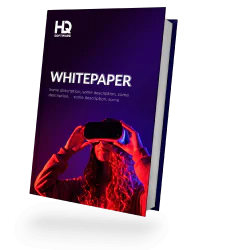
Presentations in VR
VR technologies allow for creating visual and immersive presentations that really capture the attention of the audience. This approach can be used, for example, to promote ideas more convincingly to board members or other colleagues.
Presentations in VR are especially useful for a new product demonstration, allowing meeting attendees to interact with a new product and explore its features. Also, VR allows speakers to demonstrate the capabilities of a product, using, for example, crash tests.
VR presentations can also help present prototypes and discuss prospects. Instead of explaining new ideas or complex concepts in words, the speaker can demonstrate them. This saves time and helps listeners comprehend the presentation better.
Educational workshops and training
Companies that want to ensure smooth operations pay attention to the professional development of employees. Most often, this includes providing various educational opportunities. Educational events can be anything from a narrowly focused conference for a particular department to large-scale training for all employees.
VR technology can help retain the attention of listeners, improve engagement, and boost assimilation of information. Instead of just listening, learners can be placed within a virtual environment and start practicing immediately. Freedom of action in a virtual experience helps employees look beyond conventional thinking and improve their creativity in solving various tasks.
Also, VR technologies are very effective for occupational training. VR puts employees into a safe learning environment, eliminating the chance of injury or equipment damage. And the similarity of a virtual situation to reality helps employees feel more confident when performing actual tasks.
This approach decreases training costs, as there is no need to find a special space, hire instructors, or use expensive equipment.
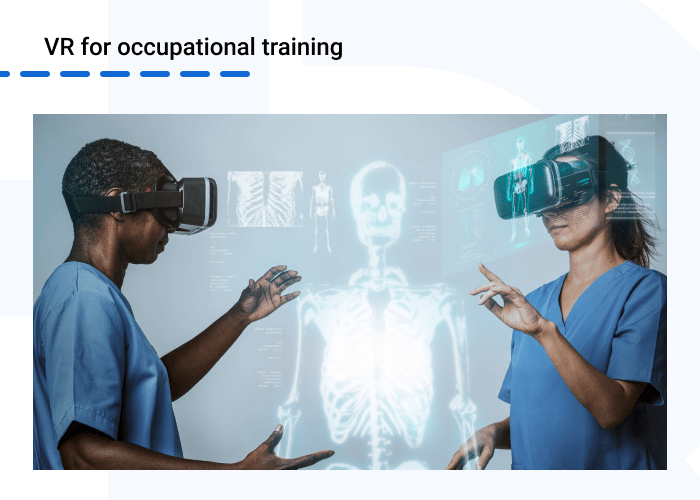
Virtual Meetings
In remote working environments, meetings and video conferences in Virtual Reality are a good alternative to traditional ones. Using VR headsets, employees are transported to a special virtual environment that resembles a room in an office. A company can choose from one of the available ready-made spaces or create a unique room.
The ability to create a customized environment enables companies to add all the features team members might use during an in-person conversation, which enhances collaboration.
Virtual meetings are good for both internal meetings and external negotiations. They bring people from various parts of the world together in one virtual space and even allow them to work together on the same project as if they were physically in the same office. This improves communication and boosts productivity.
Another advantage of virtual meetings is that having all participants in the same space gives managers more control over the meeting flow.
VR for team-building activities
Team-building activities are a real icebreaker for employees, allowing them to get to know each other better. While interacting in an immersive and engaging experience, team members can solve tasks together, become more confident, begin to feel more united as a team and improve their strategic thinking.
As VR allows for creating situations that are difficult to realize in the real world, the technology is suitable for almost any type of activity. Using VR-based devices, team members can take a trip through the jungle, explore the pyramids, or raft down a mountain river. Depending on the event’s goals, companies can choose different surroundings and tasks.
As you can see, the use of cutting-edge technologies can greatly diversify and improve corporate events. Let’s take a look at some other advantages.
Benefits of Using AR/VR at Events
Broad employee reach
AR/VR technologies allow companies to gather employees all over the world in the same virtual space. Instead of sitting separately at home, employees can share the same virtual experience and feel connected to one another.
Technologies also simplify event organization, especially team-building activities, as they can be arranged for many participants from different locations.
Enhanced assimilation
Presenting learning materials in a non-traditional way or in an unusual environment helps employees remember the information better. Аnd the ability to practice immediately keeps learners even more grounded in what they’ve learned.
According to Dale’s cone of experience, people remember only 10% of what they read and 90% of what they do. So, what will be more effective: simply reading a manual on how to construct a particular detail, or constructing it in a virtual environment? Obviously, the second option.
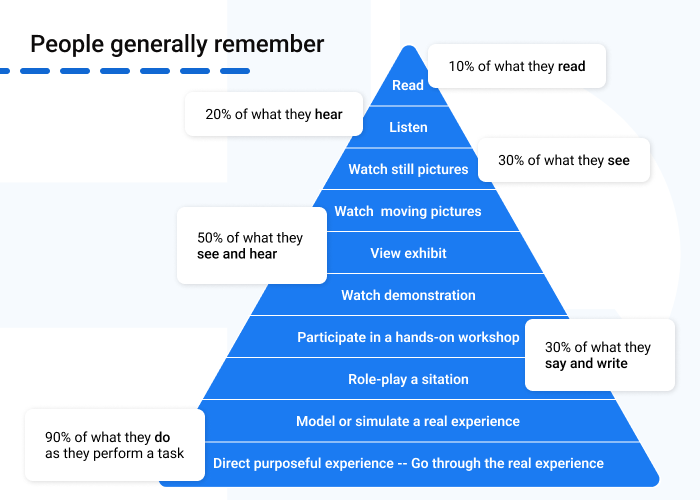
This is true not only for hard skills. A study by PwC claims that learners in VR courses learned soft skills four times faster than in traditional classrooms.
Also, enhanced absorption of material directly affects the effectiveness of applying new skills and improves job performance.
Increased concentration
Fast-changing forms of presenting information and interactive elements increase the attention span of employees and help them concentrate.
During presentations or meetings, this helps participants understand and grapple with the topic more quickly. Used at learning events, it helps participants remember the material better, and in team-building events, it results in enhanced employee engagement.
Immersive experience
AR/VR has become widespread in the gaming industry precisely because of its ability to immerse and engage users. The same applies to any corporate event.
Whether what you’re planning is a presentation or a celebration, technology that augments the existing world, or transports attendees into a completely new virtual space creates a memorable and fully immersive experience for participants.
Satisfied employees
Using cutting-edge technologies helps businesses increase the satisfaction and engagement of their employees. In turn, engaged employees can increase their productivity by as much as 14% and are more likely to stay with the employer.
The ability to use AR/VR technologies in conjunction with a memorable experience improves employees’ impression of their working environment and the company in general.
Thus, workers will not only feel satisfied and motivated but also will be more likely to recommend the company as a great place to work.
Now let’s take a look at how companies have put AR/VR for event management into practice.
Examples of AR/VR Events
One of the world’s largest retailers, Walmart, uses VR technologies for staff training. As a significant portion of Walmart stores are open 24/7, employees can’t practice in the actual store space. So, the company has opted to conduct training in a virtual environment.
“Walmart Academy” offers a wide range of training, from introductory courses to professional growth programs. VR helps to create scenarios that happen rarely but require special skills.
For example, employees can train on how to deal with a huge rush of visitors during Black Friday and solve conflicts that may arise with angry customers.
VR technologies have helped Walmart reduce training time by turning 30-minute training modules into a 5-minute Virtual Reality experience. The company also recorded an increase in final test scores of up to 10%.
Another example is Virtual Reality navy training. Training programs help navy personnel practice not only basic skills but also their response to emergencies, such as a fire onboard a ship. On a virtual submarine, learners interact with instruments that show changes in underwater temperature and movement, making training as close to real conditions as possible.
An incredible example of a product showcase using AR/VR technologies is presented by car manufacturer Aston Martin. The company has created an immersive experience that allows users to see the new luxury sedan Aston Martin DBX without physically being in the office or at the dealership.
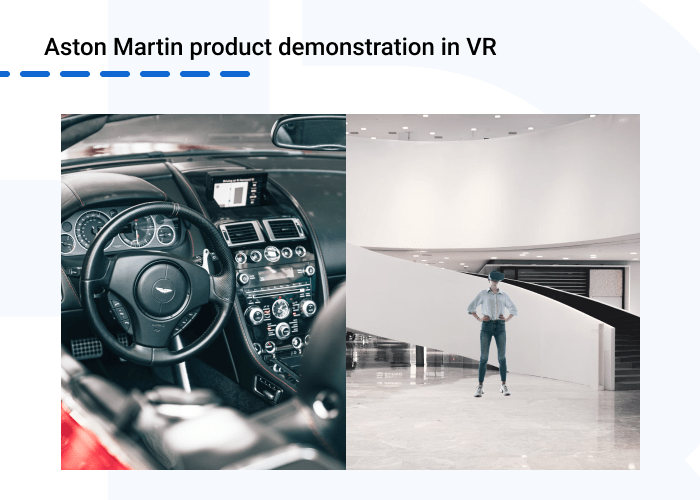
The combination of several top-notch technologies creates realistic images and makes it possible to view the car in detail, including stitching and lettering on the steering wheel and reflections within the paint.
While many brands are already using AR/VR technologies for their events, let’s consider whether this approach will remain popular in the future.
The Future of AR/VR Events
According to a PWC report, by 2030 about 23 million jobs will use AR/VR for training, meetings, and product development. It indicates that in the future AR/VR will gain solid ground in many areas, including the event industry.
With the move to hybrid work models, many daily meetings, calls, and other corporate events will continue to take place online, which also contributes to the spread of AR/VR solutions in corporate event management.
Metaverse will also bring its input to the active implementation of AR/VR. It will allow companies to create various virtual spaces for remote work to provide an immersive experience and enhance VR workplace collaborations.
AR/VR technologies already enable companies to be innovative and creative, go beyond traditional ways of thinking, and create out-of-the-box events. This will better connect employees, make their work more efficient, and enhance business collaborations. And opportunities will only expand.
For now, the AR/VR market offers plenty of ready-made solutions for various corporate events. But a customized solution from an AR/VR development company ensures that your solution meets your business goals and is tailored to its specific business operations.
At HQSoftware, we carefully study customer requirements and are ready to work with the most sophisticated requests. So, if you want to improve any kind of corporate event, we are ready to provide you with a team of experts and start developing an AR/VR solution at short notice.
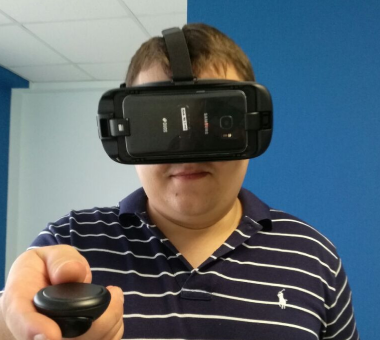
AR/VR Expert
A developer with extensive expertise in AR/VR, very ingrained into the topic of Mixed Reality development. Shares his knowledge and the results of many years of work.
Get Your VR Prototype For Free
Visit PageRelated Posts
View AllFrequently Asked Questions
How is Augmented Reality used in events?
How is VR used in events?
How are AR and VR used in entertainment?
What is your experience?
How much does it cost to build an AR/VR app
We are open to seeing your business needs and determining the best solution. Complete this form, and receive a free personalized proposal from your dedicated manager.

Sergei Vardomatski
Founder




